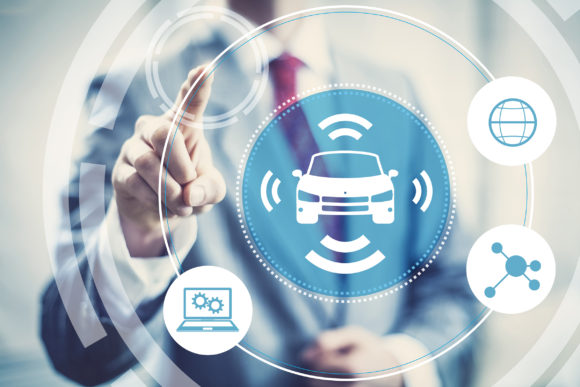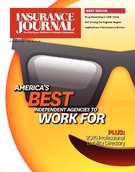California is no longer the heartland for testing autonomous cars. The first commercial deployment of self-driving cars in the U.S. is already happening in Pittsburgh, where Uber is offering its customers the opportunity to travel in its self-driving cars during testing.
During testing, the Uber self-driving cars will have driver controls and both a test driver and a “spotter” monitoring the autonomous operation. Google – which has been testing self-driving cars for several years – recently announced a new ridesharing service in the San Francisco Bay Area utilizing its existing traffic app, but not yet its autonomous cars.
But here’s the real news for the industry: these converging developments suggest a plausible scenario for the deployment of self-driving cars and the resulting implications for insurance markets.
There are two types of autonomous cars in development. The first type retains driver controls, such as a steering wheel and brake pedal. These vehicles will be capable of fully autonomous operation, but may require the operator to retake control in some driving situations. The second type of self-driving car dispenses with driver controls and is, in effect, a mobile robot.
The National Highway and Transportation Safety Administration classifies the first type of self-driving car as Level 3 and the second type as Level 4 or 5. Level 4 cars can operate without the monitoring or intervention of a human driver in some, but not all, driving conditions. Level 5 cars can operate in all driving conditions.
NHTSA recently issued its first regulatory guidance document on the deployment of self-driving cars. The guidance sets out NHTSA’s approach to regulating Level 3 and higher vehicles and expressly applies to “automated fleet operators and ‘driverless’ taxi companies.” NHTSA has stated that its guidance document will preempt state regulation of self-driving vehicle safety and testing, but not state regulation of operators of Level 3 cars.
Under the NHTSA guidance, the safety certification portions of the California Department of Motor Vehicles controversial proposed regulation of Level 3 cars would likely be preempted; other provisions of the draft regulation – including the separate licensing requirement for drivers of Level 3 cars – would remain within the state’s authority.
The Self-Driving Fleet
Level 4 cars will probably be deployed initially as fleet vehicles providing passenger transportation – and perhaps delivery services – in selected urban and suburban areas. Limited deployment addresses a range of technological, regulatory and market issues.
The current level of autonomous technology can handle low speeds and highly mapped streets – where the mapping includes day-to-day changes in road conditions, construction and other driving factors – in some, but not all, weather conditions.
The near-term technological and regulatory constraints will be reinforced by the economic constraints of operating a fleet of self-driving cars. There must be a ready supply of self-driving cars for autonomous transportation services to be viable. People won’t utilize a self-driving car transportation service – beyond the initial novelty phase – if there are insufficient vehicles to meet demand.
Insuring the Self- Driving Fleet
Self-driving transportation services fleets will carry commercial auto coverage, with subrogation of claims to product liability coverage. Auto product liability subrogation claims for autonomous will probably reach a wider range of product liability policies than in the past.
In addition to the auto manufacturer, subrogation claims will be tendered to the sensor manufacturers, various software designers – including the software incorporated in mapping systems and sensor systems – and even the designers of the chips optimized for autonomous vehicles. The transportation services company may also face claims for deploying the fleet inappropriately in adverse weather conditions.
Initially, self-driving transportation services fleets will be competing primarily with taxis and transportation networks using conventional cars including Uber’s own app. For there to be a material impact on rates of automobile ownership – and, thus, the demand for private passenger auto insurance, self-driving transportation services fleets will need to be a viable option for commuters and routine errands such as grocery shopping.
An Autonomous Vehicle in Every Garage?
Except in dense urban areas and among elderly drivers, the privately owned car is not likely to disappear entirely, even as autonomous vehicles become more capable.
A major transformation of the private passenger auto market is likely to require vehicles that can “toggle” between autonomous operation and substantially human controlled driving. Currently, there is an on-going debate among autonomous driving developers whether Level 3 autonomous vehicles that require a human driver as backup are a viable option. People who are not professional test drivers tend to over-estimate the capability of technology and under-estimate the length of time it will take them to regain situational awareness when an autonomous vehicle leaves self-driving mode.
The answer may be cars where the driver can select at the beginning of a trip between a Level 4 autonomous driving mode that does not call for human intervention and a human-controlled mode that requires active and continuous driving, albeit with very sophisticated collision avoidance systems.
If this scenario materializes, the one-car garage may make a comeback. Families may own one “toggle” car and rely on driverless fleet vehicles for routine trips.
Although people will own fewer cars, private passenger auto insurance will continue to exist. Accident frequency and bodily injury severity – but not property damage severity – will decline. At the same time, private passenger auto insurers will face novel claims patterns and subrogations, resulting in an upward trend in loss adjusting costs. This will create a challenge for private passenger auto insurers.
Topics Auto Legislation Claims
Was this article valuable?
Here are more articles you may enjoy.



 State Insurance Legislators ‘Greatly Disturbed’ by Trump AI Regulation Order
State Insurance Legislators ‘Greatly Disturbed’ by Trump AI Regulation Order  Florida Jury Returns $779M Verdict for Family of Security Guard Killed at Gambling Cafe
Florida Jury Returns $779M Verdict for Family of Security Guard Killed at Gambling Cafe  McKinsey Plots Thousands of Job Cuts in Slowdown for Consulting Industry
McKinsey Plots Thousands of Job Cuts in Slowdown for Consulting Industry  US House Bill Aims to End Private Flood Insurance Coverage Penalty
US House Bill Aims to End Private Flood Insurance Coverage Penalty 



